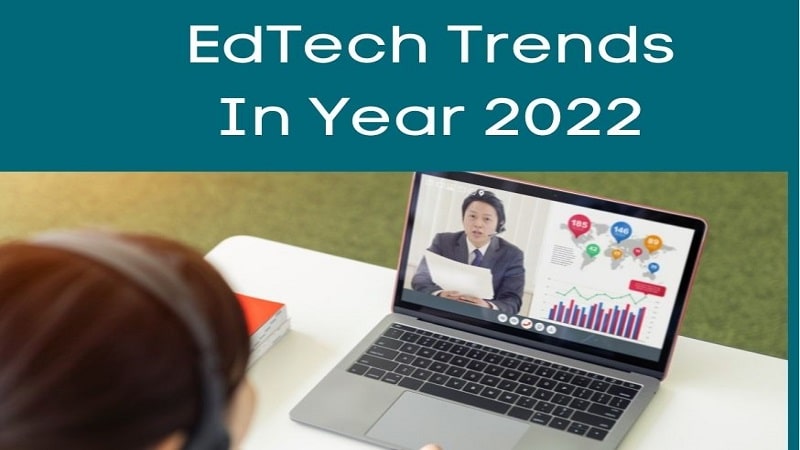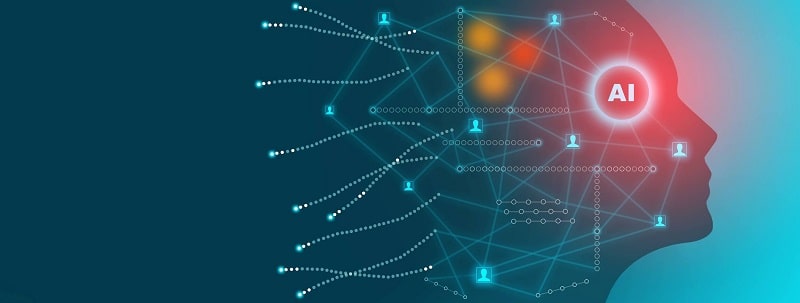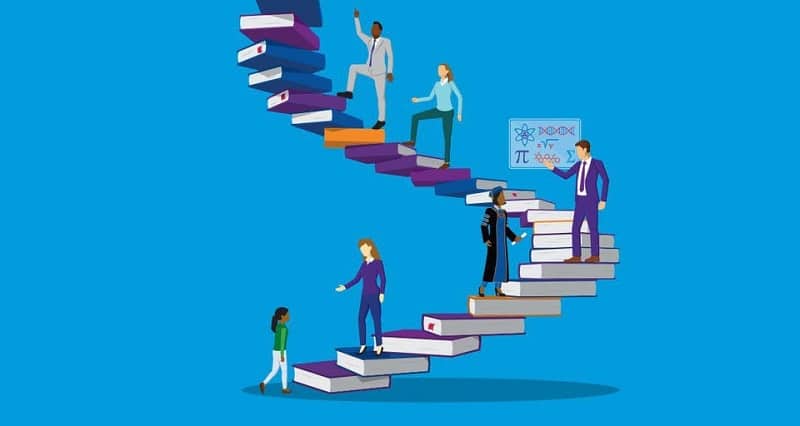
In the pandemic, it quickly became evident how much technology could facilitate learning. As we start to see glimpses of a post-pandemic world, many are wondering whether some of the changes will continue and impact the future of education. It already appears that online or remote learning is here to stay, even if it’s in the form of hybrid education.
Education Technology (EdTech) is any hardware or software that can improve the design or delivery of educational activities. It’s a wide-ranging category that includes everything from specifically designed apps to encourage remote learning to smart boards for classroom use. Here are some EdTech trends to watch out for in 2022.
AI-driven personalized learning
Artificial intelligence could change the future of education because it has the potential to provide students with a more personalized learning experience.

Students can use devices like tablets or laptops to engage in interactive learning activities. AI can monitor their progress, identify areas where they struggle and provide the exercises they need to fill their gaps in knowledge and reinforce concepts. This can be very beneficial to all types of learners, from high achievers to those with learning difficulties.
Time Magazine named the ROYBI Robot as one of the best inventions of 2019. It uses machine learning to tailor educational content depending on the learning style of the child interacting with it and even takes emotions into account.
The AI-enabled writing tools are also quite popular, and top agencies like Australian Writings and a lot of content writers use them regularly. The tools are based on machine learning, so they continuously upgrade themselves and provide the best education experience to students.
Accessible education
EdTech is making education more accessible to a wide range of people who can learn from any place and at any time if they have a mobile phone and internet access.
- Video conferencing technology facilitates remote learning and allows students to collaborate without having to be in the same physical space. Tutors can also provide remote mentoring to students.
- The rise of e-textbooks and interactive textbooks provides students with access to knowledge that they may not have been able to access before due to the high cost of physical textbooks. Integrated features such as video, annotation, search features and audio transcription are making e-books a great source of information.
- Gamification apps like CodeAcademy and Duolingo offer easy accessibility to learning for everyone, even while on the go. Duolingo uses adaptive learning to teach foreign languages.
- Businesses can utilize specialized Ed-Tech platforms to train employees. This is far more efficient and cost-effective than traditional in-person training. Employees can do training in their own time and at their own pace. They are empowered to learn independently with minimal disruption to daily business activities.
- Open Educational Resources (OER) offer the use of materials and software for educational purposes at no cost.
Lifelong education

In a world where the skills individuals have today could be obsolete tomorrow, ongoing education is becoming essential. Many children born today will work in future jobs that don’t yet exist. The speed at which technology is developing makes it difficult to keep up.
At the same time, there is a growing demand for skills and knowledge. Ongoing education will be necessary in the future to ensure people are employable and confident in their knowledge.
Practical and real-life interactive learning
Education is changing from focusing on facts to empowering students, from hiring online college essay writer to study organizing apps. EdTech solutions focus on concepts and skills rather than just teaching facts. More practical and real-life interactive learning experiences are available.
The use of virtual reality (VR) and augmented reality (AR) facilitates immersive learning. The price of headsets is dropping, which means it’s becoming more realistic to use this kind of technology in educational settings to enhance the visual learning process.
For example, students can see the human body in 3D and take virtual field trips to locations like the Louvre. Those with disabilities can use VR to see what they can’t physically access.
Automating administration
EdTech has many benefits for the administrative aspect of education. There is no longer any need for the administration to add to the stress that teachers face. They can apply EdTech to automate tasks such as lesson planning, progress tracking, scheduling assessments and writing reports. Artificial intelligence is already being used in many U.S. states to grade essays. Without this administrative burden, teachers can do what they’re best at – teaching.
AI-enabled chatbots are becoming increasingly common in educational settings, and integrated cloud-based systems can facilitate communication between teachers and parents. Programs like Moodle are serving as a central information source for teachers, parents and students.
Accelerating investments

The EdTech sector is becoming highly attractive to investors. Global venture capital investments in EdTech reached over $10 billion in 2020. Investing in post-secondary education products was most popular.
EdTech services were essential over the past few years and have now become an integral part of the educational environment. They are valued by many people, including students, teachers and business professionals who want to keep learning and improving their skills.
The work the EdTech sector is doing now will pave the way for new technology that will shape the future of education around the world. As the demand for EdTech expands, investment in the sector is likely to continue and grow.
Conclusion
EdTech is evolving rapidly and it will be interesting to see which trend causes the greatest changes in education. EdTech solutions such as mobile learning apps, peer-to-peer learning platforms and multimedia have provided wider accessibility to education than ever before.
Education is not only becoming more accessible but more immersive and personalized too. The industry is likely to face its challenges but it also has the potential to completely alter the educational landscape.








